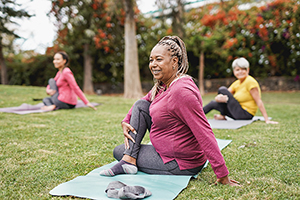Hip pain can significantly hinder your ability to enjoy the activities you love. Thankfully, hip replacement surgery offers a life-changing solution, restoring mobility and reducing discomfort. But a natural question arises: what can you expect after surgery? And when can you get back to doing the things you love?
The good news is, with proper rehabilitation, a return to an active life is achievable. However, it's important to remember that recovery is a journey, not a race. Let's explore how to navigate this path effectively and safely reclaim your active lifestyle.
Embracing Low-Impact Activities: Your Stepping Stones to Recovery
Low-impact exercises are your allies in the early stages of recovery. These gentle activities promote healing, strengthen supporting muscles, and improve your range of motion without placing excessive stress on your new hip. Some excellent examples include:
- Swimming: This full-body workout is easy on the joints and offers a refreshing way to regain strength and flexibility.
- Water aerobics: This is a fun and social way to exercise in a low-impact environment. The water's buoyancy reduces stress on your joints while providing a great workout.
- Walking: One of the simplest yet most effective exercises, walking allows you to gradually increase your endurance and rebuild strength.
- Cycling: Whether using a stationary bike or venturing outdoors, cycling strengthens your legs and improves cardiovascular health.
These activities are generally safe to resume after proper healing and with your doctor's approval. Remember, consistency is key. Aim for regular sessions, even if they're short initially. As you progress, you can gradually increase the duration and intensity of your workouts.
The Gradual Progression: Building Strength and Confidence
Think of your recovery like climbing a staircase. You wouldn't attempt to jump to the top, would you? The same principle applies to exercise post-surgery. Gradually increasing the intensity and duration of your workouts allows your body to adapt and rebuild strength safely. Here's where a physical therapist becomes your invaluable guide.
A physical therapist can create a personalized exercise plan tailored to your specific needs and recovery timeline. They'll guide you through exercises that target the muscles supporting your hip, improve your balance and coordination, and ultimately, help you return to your desired activities.
Green Light vs. Red Light Activities: Knowing Your Limits
As you progress, it's crucial to understand the difference between "green light" and "red light" activities. Green light activities, like those mentioned earlier, are generally considered safe for individuals who have undergone successful hip replacement surgery. Red light activities, on the other hand, should be approached with caution. These typically involve high-impact movements or a significant risk of falls, such as:
- Running
- Skiing/Snowboarding
- Contact sports like football or basketball
- Activities that require sudden changes in direction or jumping
While some individuals may eventually be able to return to certain "red light" activities with proper training and caution, it's important to discuss this with your doctor and physical therapist on a case-by-case basis.
Listen to Your Body: Pain is Your Guide
Even with green light activities, remember that your body is your best indicator. Pain is a signal that something's not right. Don't push yourself through discomfort. Stop the activity and consult your doctor or physical therapist if you experience any pain.
By prioritizing low-impact activities, gradually increasing intensity, understanding your limitations, and listening to your body, you'll be well on your way to regaining the active lifestyle you desire.
Looking for Guidance and Support on Your Path to Recovery?
At the American Hip Institute (AHI), we understand the importance of a personalized approach to recovery after hip replacement surgery. Our team of highly qualified surgeons and physical therapists are dedicated to helping you achieve the best possible outcome. Contact us today to schedule a consultation.




